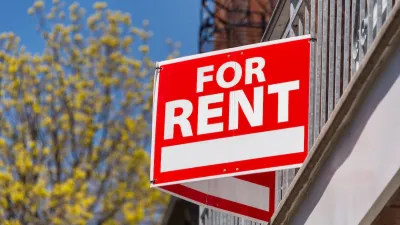New data points to the continued worsening of rental housing affordability. Due to a lack of federal response, some state and municipal governments are taking matters into their own hands in an attempt to add to their supply of affordable housing.
The 2016 State of the Nation’s Housing Report published by Harvard’s Joint Center for Housing Studies once again points to the continued worsening of rental housing affordability as a significant societal issue calling for a more concerted response. Citing recent data from the American Community Survey, the report found that the number of renters facing housing cost burdens (i.e. paying more than 30 percent of their income for housing costs) hit another record high of 21.3 million, which is just about half of all renter households in the nation. More concerning, the number of people facing severe cost burdens (devoting more than half their income to housing), also reached a new record of 11.4 million. The report documents how the affordability crisis is getting new and greater policy attention, particularly at the state and local level. Indeed, with federal response failing to keep up with the need, a growing number of state and municipal governments have been taking matters into their own hands in attempts to add to the supply of affordable housing.
Affordability problems are nearly universal for the lowest income households. For those making $15,000 per year—roughly the equivalent of full time work at the federal minimum wage—83 percent are housing cost burdened. For most of these households, the level of burden is severe, with 72 percent of the lowest-income renters and 66 percent of the lowest-income owners paying over half their monthly household incomes towards housing.
But cost burdens are not limited to low-income households. They are increasingly climbing up the income scale to reach more and more moderate-income households.
FULL STORY: As Affordability Worsens, State and Local Governments Act on their Own

Planetizen Federal Action Tracker
A weekly monitor of how Trump’s orders and actions are impacting planners and planning in America.

DARTSpace Platform Streamlines Dallas TOD Application Process
The Dallas transit agency hopes a shorter permitting timeline will boost transit-oriented development around rail stations.

Congressman Proposes Bill to Rename DC Metro “Trump Train”
The Make Autorail Great Again Act would withhold federal funding to the system until the Washington Metropolitan Area Transit Authority (WMATA), rebrands as the Washington Metropolitan Authority for Greater Access (WMAGA).

Supreme Court Ruling in Pipeline Case Guts Federal Environmental Law
The decision limits the scope of a federal law that mandates extensive environmental impact reviews of energy, infrastructure, and transportation projects.

Texas State Bills to Defund Dallas Transit Die
DART would have seen a 30% service cut, $230M annual losses had the bills survived.

Bikeshare for the Win: Team Pedals to London Cricket Match, Beats Rivals Stuck in Traffic
While their opponents sat in gridlock, England's national cricket team hopped Lime bikes, riding to a 3-0 victory.
Urban Design for Planners 1: Software Tools
This six-course series explores essential urban design concepts using open source software and equips planners with the tools they need to participate fully in the urban design process.
Planning for Universal Design
Learn the tools for implementing Universal Design in planning regulations.
Roanoke Valley-Alleghany Regional Commission
City of Mt Shasta
City of Camden Redevelopment Agency
City of Astoria
Transportation Research & Education Center (TREC) at Portland State University
US High Speed Rail Association
City of Camden Redevelopment Agency
Municipality of Princeton (NJ)





























